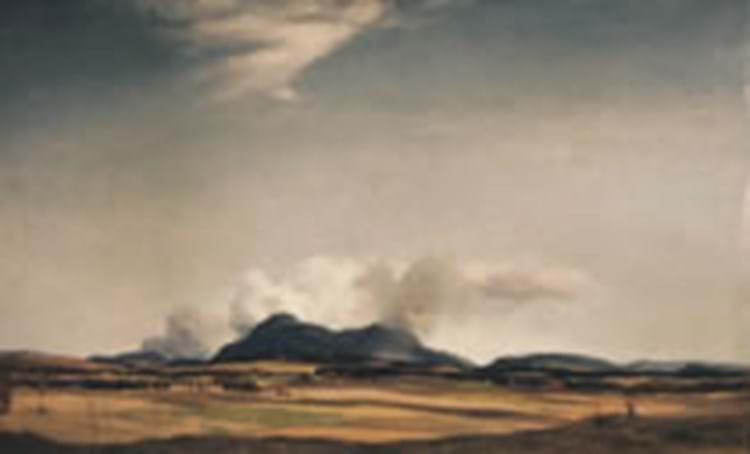
In 1928, just two years after the British Museum paid £600 for a Michelangelo study for the celebrated Creation of Adam on the Sistine Chapel ceiling, Cameron's etching Five Sisters, York Minster, sold for an extraordinary $2500 (£660).
'Would you like to come up to see my etchings?' became an offer too good for any girl with any financial sense to refuse. Then, in 1929, Wall Street's share prices crashed, and so did the speculative market for etchings. Today
that Michelangelo drawing would be worth millions, while Cameron's Five Sisters is now valued at around £5000 - in real terms a fraction of its original value.
The landscape paintings of Sir David Young Cameron (1865-1945), have never commanded the same degree of speculative interest, but perhaps there was a hint of a mini-revival in the air when this large and typically austere canvas of the Perthshire countryside in autumn made £19,500 at the Tunbridge Wells rooms of Dreweatt Neate (15% buyer's premium) on December 10.
Entered by the executors of the late Misses Sheila and Muriel Raeburn, the spinster grand-daughters of the Scottish ship-building magnate Sir William Hanny Raeburn (no relation, unfortunately), the Cameron was part of a group of eight Scottish pictures that had remained untouched in this same family collection for the best part a century.
At 2ft 11in x 4ft 2in (89cm x 1.45m), this canvas was a little too big for many people's walls, but the painting was in excellent condition and the palette unusually light for Cameron, whose paintings can be far more lugubrious in tone.
This was also probably the first time the painting had ever appeared at auction. Encouraged by these factors,
bidders pushed far beyond the modest £2000-3000 estimate and it was eventually knocked down to a London trade phone bidder at £19,500.
This is hardly the stuff of 'Come up and see my Camerons', but it would appear to be a new record for the artist, bettering the £16,000 bid for Ypres at Phillips Edinburgh at the height of the last great art market boom.




